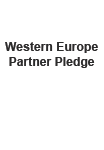Customer segmentation and the creation of buyer personas are business strategies that have been proven to be basic for companies. However, carrying out a customer segmentation and defining our buyer personas are different things. We explore the differences between customer segmentation and the creation of a buyer persona.

The classification of customers into segments is one of the most common strategic techniques used by companies. There are several reasons for this. On the one hand, segmenting clients helps companies to better understand their customers. Implicitly, when we classify our customers into groups, we obtain valuable information about who our customers are, how they are similar and different from each other and their needs. On the other hand, segmentation is an essential exercise for marketers —especially for insight marketing— as it is the starting point for generating personalised content and campaigns as well as offering customer experiences that are more tailored to our customers' needs.
In this blog we have previously talked about customer segmentation and the types of customer segmentation that exist. In addition, we have a complete guide explaining how to segment customers to achieve the desired results and meet our business needs. You don't have it yet? Download it now!
Beyond customer segmentation, organisations also rely on the definition of their buyer persona. Although both processes consist of creating a customer profile, they are quite different techniques that, strategically, serve different purposes, although both encourage the establishment of a customer-centric culture.
What is customer segmentation or market segmentation?
Customer segmentation —also referred to as market segmentation— is a strategic method for companies to identify similarities and discrepancies among their customers. It basically consists of an exploration exercise of our customer portfolio based on data analysis. By finding resemblances between consumers, we can classify them into groups or clusters with similar characteristics.
Customer segmentation is one of the most widely applied customer intelligence strategies, as it allows marketing, sales and commercial departments to develop more appropriate actions for each customer profile and to create, for example, different customer experiences. By exploring our clients' characteristics and consumption habits, we can then sort them out in order to create sales actions, campaigns, promotions and offers aimed at a specific customer segment. Likewise, segmentation also helps companies to better define their value proposition and to adjust their price range.
The purpose of customer segmentation is to offer each customer exactly what they need. In this sense, classification can be carried out using multiple classification parameters depending on what each company is most interested in discovering or optimising. For example, segmentation by demographics is the most basic type of segmentation. However, we can develop more specific segmentations focusing on clients' pain points or their contribution to profitability. It is also common to explore criteria related to our products or services, such as customers' consumption habits, their behaviour in each of our touch points, the average value of the purchase ticket, the stages of the conversion funnel, lifetime value (LTV), etc.
In short, the ultimate goal is to identify our customers and target markets in order to rethink our service and product offerings, our sales campaigns, actions towards the market, offers and prices, and to provide a more appropriate customer experience for each type of client.
What is the creation of a buyer persona?
The creation of a buyer persona is part of a segmentation method that is both qualitative and quantitative in nature and differs somewhat from other types of customer segmentation.
A buyer persona is a semi-fictional representation of our ideal or potential customers that is based on both qualitative and quantitative data obtained from customer segmentation, market research or other research methods.
Therefore, while customer segmentation is the mere classification of our existing customers, the creation of buyer personas is based on this segmentation to create one or more abstract profiles that represent our potential or ideal customers.
In other words, to create a buyer persona we also need data about our customers. From this data we can create a customer profile partially based on real data supplemented with additional information to make the representation as holistic and dynamic as possible.
One of the main distinguishing aspects of the buyer persona method is that it envolves much more depth than ordinary customer segmentation processes. The purpose is to humanise the client as much as possible in order to understand not only who they are, but also what they want, what they care about and what they aspire to. Therefore, a buyer persona contains introspective details about consumers. For example, when defining our buyer persona, we should take into account things like their family situation, their relationship with their friends, their main problems, their long-term needs, their dreams and expectations, and so on.
In short, creating a buyer persona is a deeper type of segmentation aimed at empathising with the customer, understanding their world and their way of life, and therefore identifying what they need and how we can provide it.
Buyer persona example:

Customer segmentation vs Buyer Persona
As we have already seen, customer segmentation is a very useful methodology to classify customers based on a socio-demographic and quantitative approach. This strategy focuses on generating intelligence and optimising multiple customer-related strategies. The overall purpose of customer segmentation is to discover what our customers are like, to classify them and to better understand the market.
The creation of buyer personas, on the other hand, is a much deeper type of segmentation that complements our customer data with qualitative aspects. With the aim of building archetypes of between 3 and 8 of our ideal customers, the definition of our buyer personas will help us to understand the customer much better from a more qualitative and holistic point of view in order to subsequently generate content and personalisation campaigns that really generate impact and expand our value proposition.

Would you like to know what type of segmentation would be most effective according to the specific characteristics of your business? Ask us!
The options are unlimited and each company should prioritise the type of segmentation that best suits its business objectives. At Kale we specialise in carrying out multiple types of customer segmentation according to the specific needs of each company. Take a look at our services and/or contact us.





